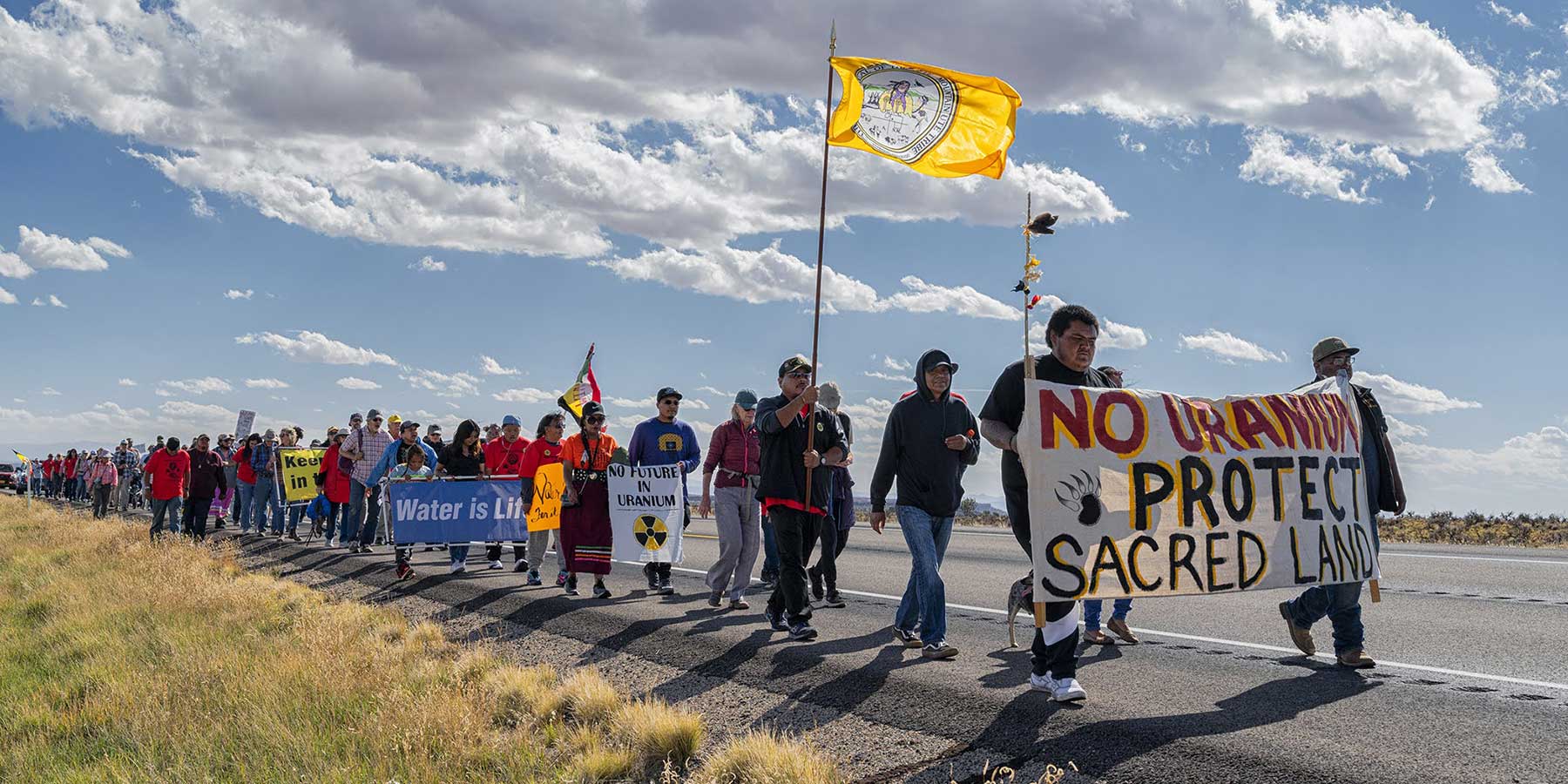
White Mesa Uranium Mill
Preventing radioactive contamination in southeast Utah from the White Mesa uranium mill
The White Mesa Mill, the country’s only functioning uranium mill, sits on the doorstep of Bears Ears National Monument in southeast Utah
It neighbors the Ute Mountain Ute Tribe’s White Mesa community and was built in the late 1970s to break down rocks and process natural uranium ore. But when the owners of the White Mesa Mill quietly changed their business plan, the mill became a commercial dumping ground for low-level radioactive wastes from contaminated sites across America and the world.
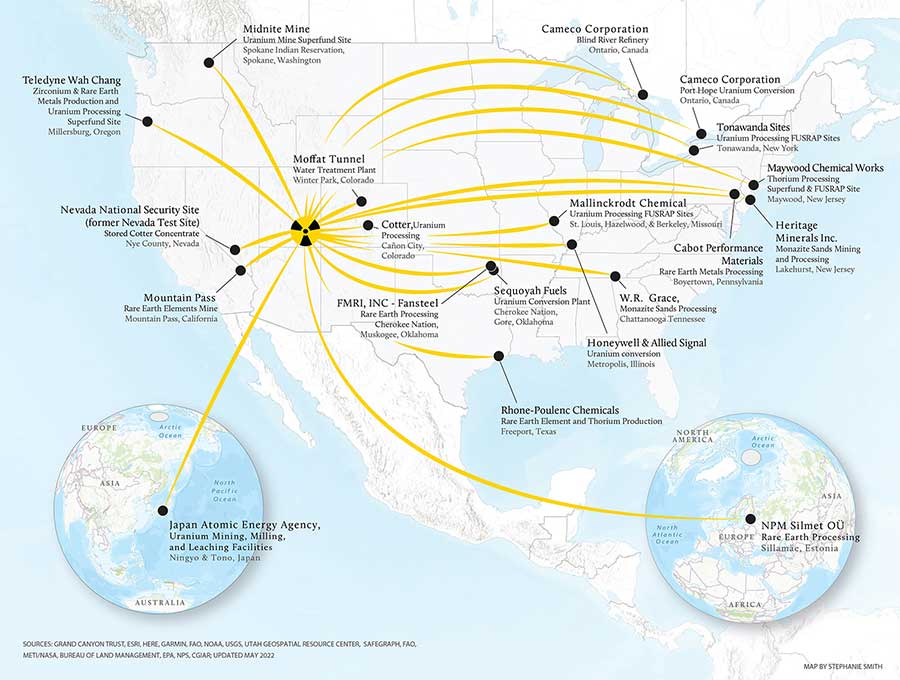
The White Mesa Mill needs new regulations
Now, the mill accepts radioactive wastes for processing and disposal. Already, over 700 million pounds of toxic wastes simmer in the mill’s massive waste pits.
We believe that if the White Mesa uranium mill wants to function like a radioactive waste-disposal business, clearly it should be regulated like one.
Ask decision-makers to protect Bears Ears from radioactive waste
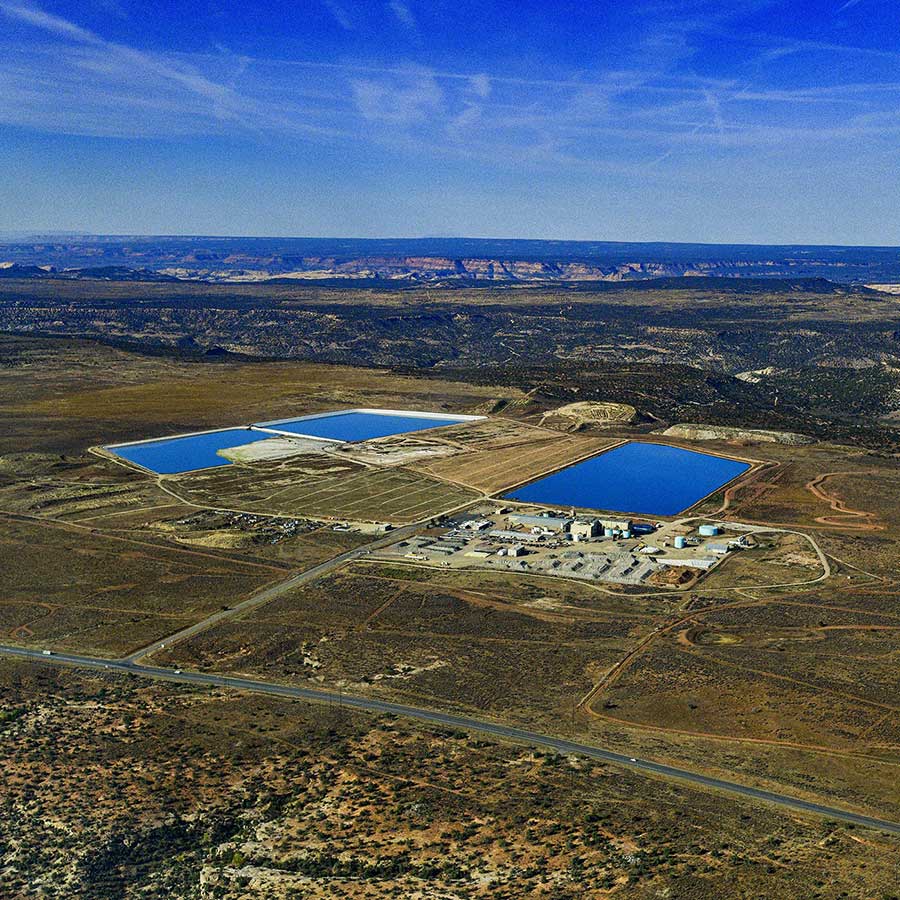
Why does the White Mesa Mill accept waste from Superfund sites?
Around the early 1990s, the mill’s owners began pursuing a new source of revenue by processing “alternate feeds” and discarding the resulting waste at the mill. These feeds include uranium-bearing wastes from other contaminated places around the country, including remnants from the Manhattan Project and Superfund sites.
Unfortunately, it is cheaper for polluters to send their waste to the mill than to a licensed low-level radioactive waste dump. The mill’s owner earns millions in fees each year in exchange for processing and discarding alternate feeds.
A radioactive dump
For over two decades, the White Mesa Mill has processed and disposed of radioactive wastes from around North America. Now, the mill plans to process and discard waste from Estonia and Japan as well. So will the White Mesa Mill become the world’s radioactive waste dump?
View maps of radioactive wastes approved or considered for processing at the White Mesa Mill
Find out what radioactive wastes are processed at the White Mesa Mill
Communities at risk
The White Mesa community of the Ute Mountain Ute Tribe lives a few miles from the mill. Often, the wind blows from the mill toward their community at White Mesa, and groundwater beneath the mill flows toward White Mesa as well. Blanding and Bluff, Utah, are both within 20 miles of the mill.

Environmental and health concerns
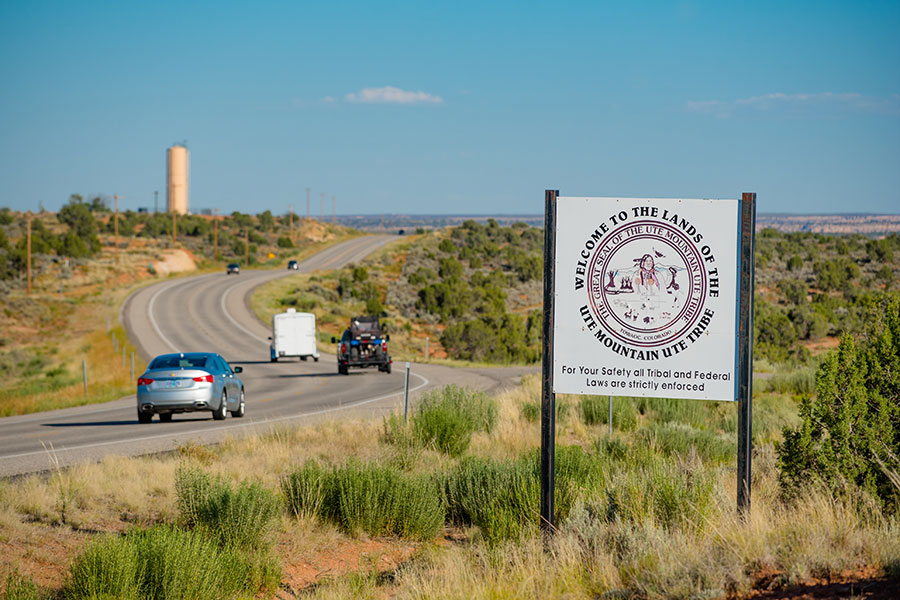
Toxic spills
Haul trucks headed for the mill have spilled radioactive sludge along U.S. Highway 191, the route the White Mesa community’s school bus follows each morning. Though local community members have, in the past, been among the last to know.
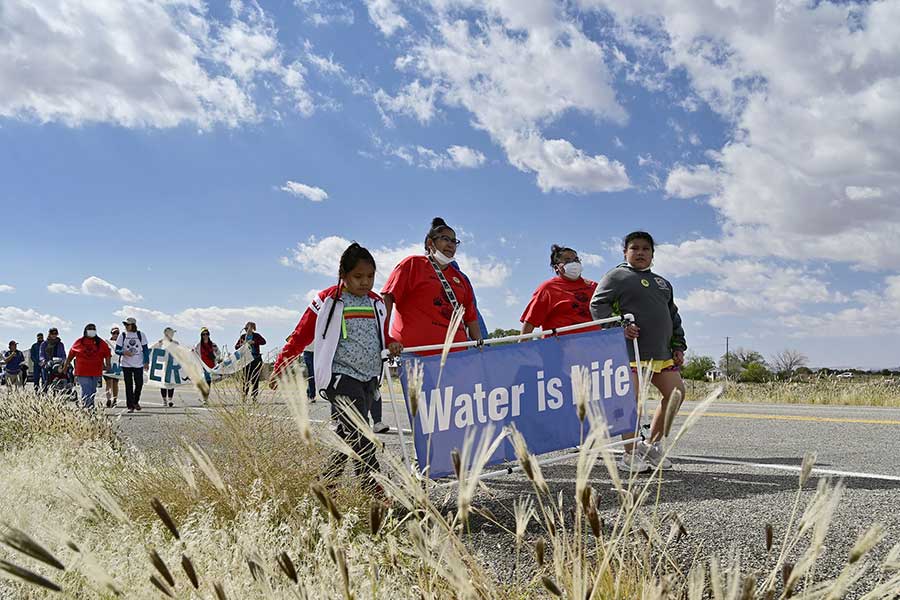
Contaminated groundwater
Plumes of contaminants, including nitrate, and chloroforms, have been detected in the groundwater beneath the mill. White Mesa community members are worried the contamination will reach their drinking water.
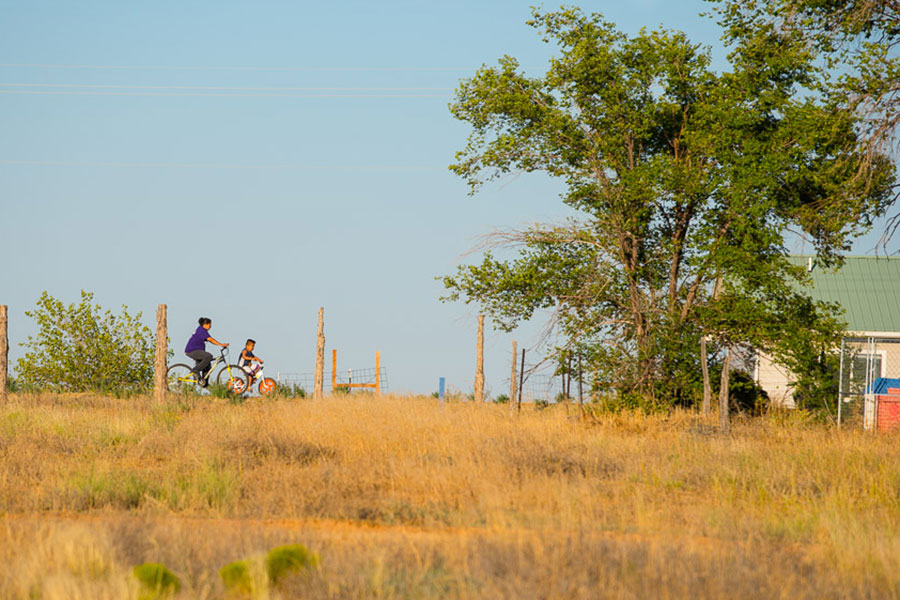
Air pollutants
The mill emits radioactive and toxic air pollutants, including radon, sulfur dioxide, and nitrogen oxide. If inhaled, these particles can damage lung tissue and lead to lung cancer. Radon is the number one cause of lung cancer in non-smokers.
“The water under the mill is becoming more and more polluted and is moving toward our community…We used to drink the spring water for ceremonial purposes. We don’t do that anymore. We used to hunt for animals near our homes; we used to gather plants for baskets, and to eat. We don’t do that anymore as well.”
White Mesa Concerned Community
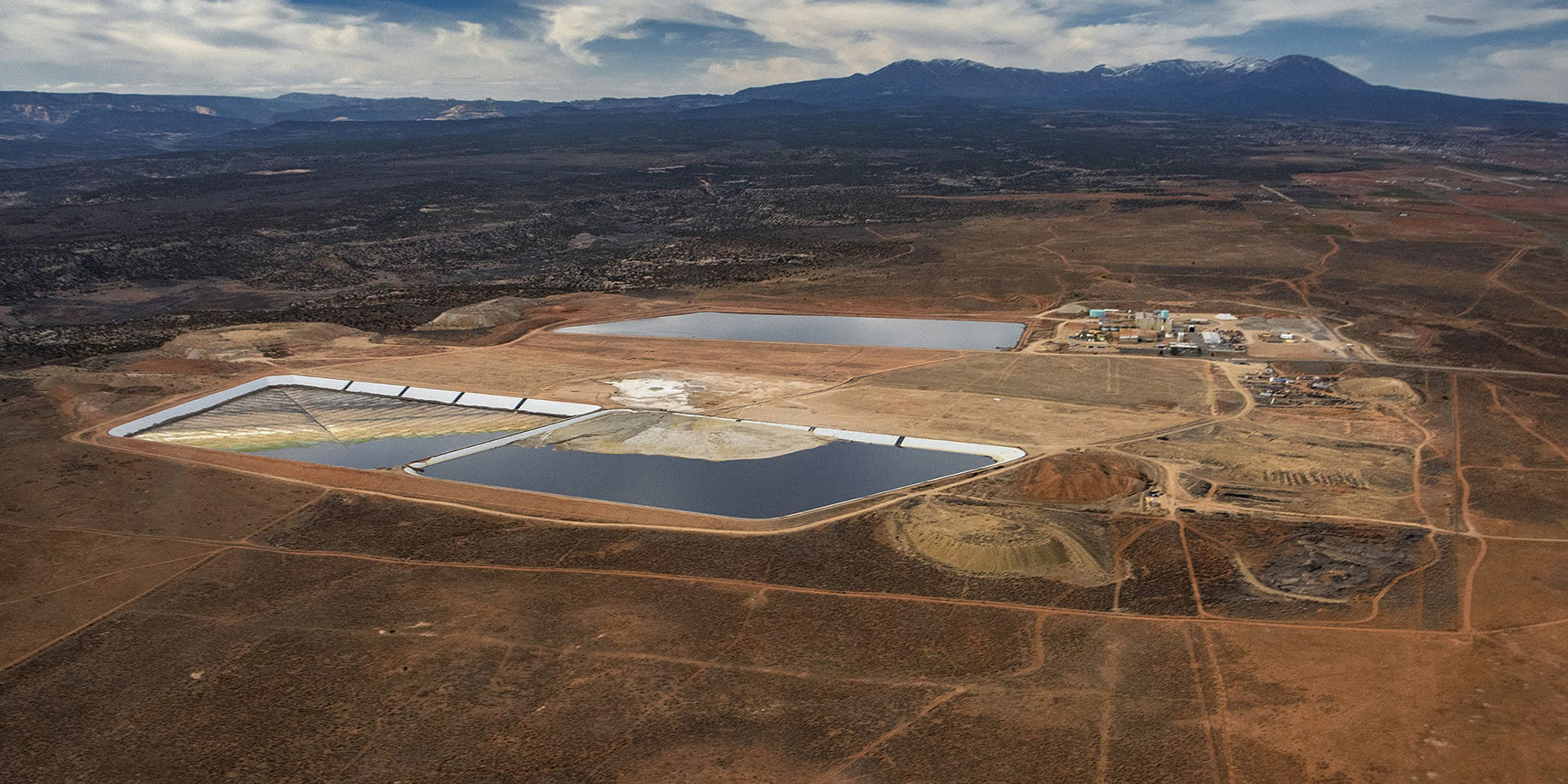
Plastic liners
White Mesa Mill’s oldest waste ponds are lined with a single layer of plastic between two layers of crushed rock. If those liners crack, radioactive waste in the pits could leak into the shallow groundwater below.
Today, these kinds of waste pits must have two liners with a leak-detection system sandwiched between them.
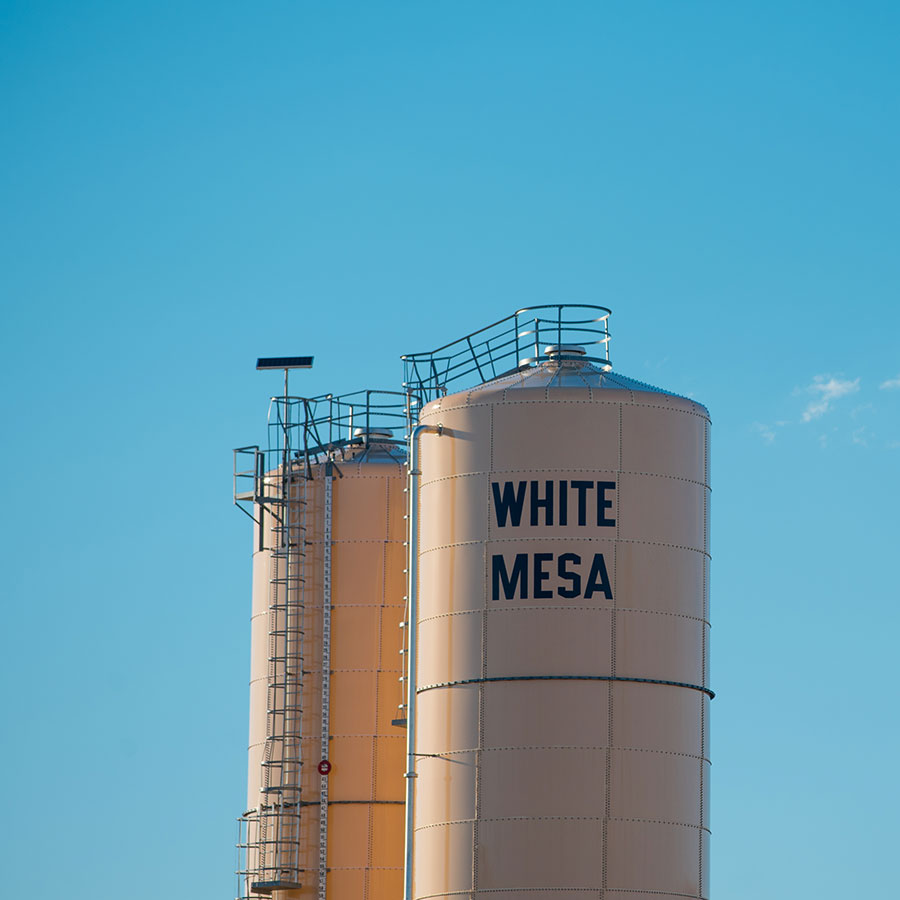
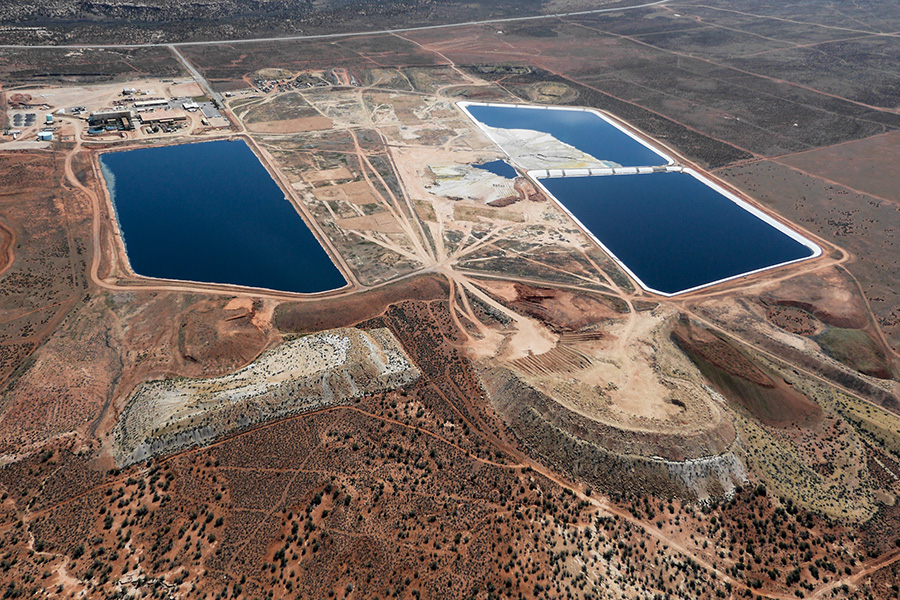
The Business of Radioactive Waste
May 31, 2023
Learn more about uranium
Get the latest uranium news on the blog




